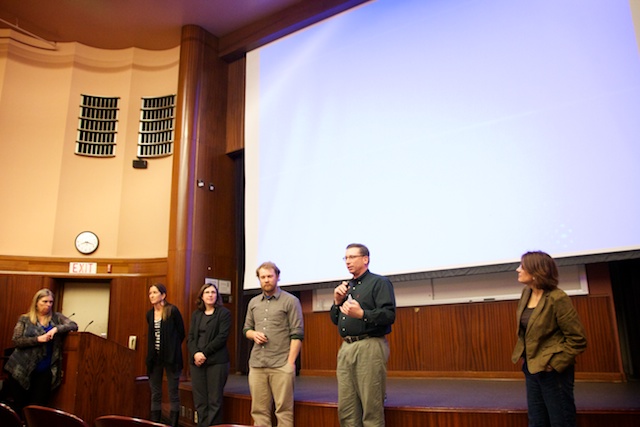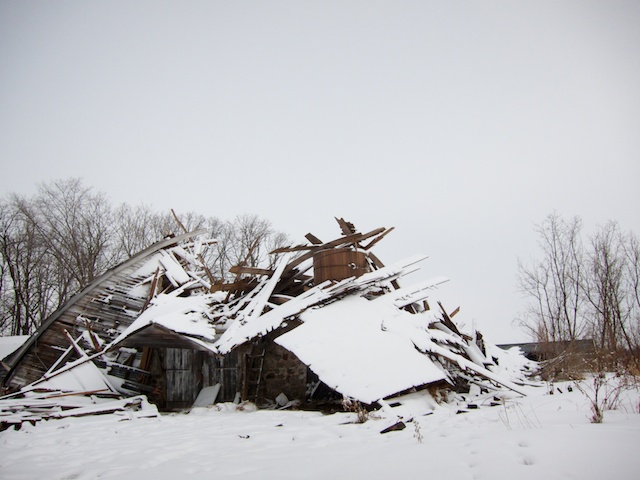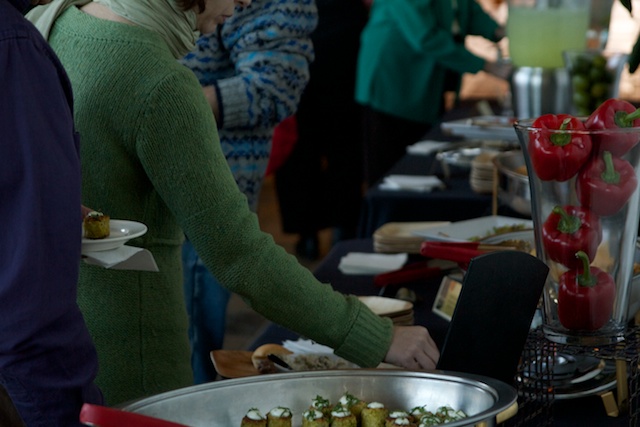When the Barn Falls Down


The Power of Young Farmers
There has been a lot of talk about the importance and impact that young farmers will have on the future of agriculture but it's often nice to step back and reflect. As the median age of farmers increases and new/young farmers will shape the face of agriculture there seems to be a shift in the direction many people want to see farming go.
Seeing the passion and enthusiasm that many young farmers posses for their carrer paths is inspiring and encouraging for the future of agriculture. All of the young farmers we have stopped to interview along our journey share a similar outlook on life; being outside and tending to the earth is of the utmost importance to them. That's why the Young Farmer Screening Series and the Young Farmer Video series are both so important. These are opportunities for communities of young farmers to come together in support of an overarching goal, the goal to re-establish priorities in the way we eat and the way we view food.
For people who are thinking about farming as a career path, it is crucial for them to understand there is an entire network of likeminded individuals who would love to share and support the endeavors. Starting a farm is hard, most farmers will attest to their struggles along the way but those stuggles make the finished product sweeter. Waking up every day to something that you have cultivated, you have created is a feeling that's tough to rival.
The Stone Barnes Apprentice Program is a great example of young farmers coming together and forming a common bond. These apprentices are rising to a call to help change a current system, a system in dire need of repair. Seeing their camaraderie and desire to support each other speaks to the primary theme of this movement. People helping other people. Whether you help support your farmer down the street or your local butcher our message is to show that people are there. For the past 40+ years the human aspect has been removed from food. We haven't known where our meat, milk or veggies come from but that's changing and it's starting at places like Stone Barns.
Cinncinnati and Out
We finished editing the portrait of Tyler Palmer and headed out to the farm where Matthew made hash browns, and Karen scrambled eggs with onions, cilantro and bacon. They're a good team in the kitchen, telling stories, laughing.
Matthew Keener

Read more
Arrival at the Keener's


Read more
Collective Commitment
Once again we got a full sleep, and said goodbyes and thankyous to our kind hosts Sally and Chuck, both longtime friends of Andy.


Waynedale to Denison
We slept in, which was much needed.
Showers, breakfast and on the road around noon, heading North for Waynedale HS in Apple Creek.
We drove through backroads after being on the main roads, an enjoyable change of pace. Ohio is full of rolling hills, and the last dustings of snow as the winter days rapidly approach spring. Waynedale High School was kind enough to host us, Don McConnell the AgEd instructor in his final days after teaching for 32 years. Don's passion was evident in the shop room, where students were building model homes from scrap wood.
The school is going through a financially challenging time, and as a result the FFA program has recently been cut out completely, and will be phased out over the course of the next couple years. The equipment needed repair, and the wood shop was cold because Don said that one of the roll gates to the building wouldn't seal shut. About 20 kids shuffled in, surprised to find the TV setup. We screened some scenes from the documentary, and talked about the advantages and disadvantages of different systems of agriculture. A few kids in the back talked about something else, perhaps the recent state wrestling tournament. One student upfront, was super engaged, and after the screening told us he thought the presentation was awesome, which is appreciated. The kids headed out and we talked a bit with Don, learning about how little he's being paid, and realizing just how often that our nation's AgEd teachers are working because of a sense of purpose, and not because of any financial reward. It's something that matters deeply to them. Which is why it was sad to hear that FFA was cut at Waynesdale, a school district that because of disappearing revenue, it seems, may actually itself be consolidated in the years ahead.
As we drove out of the parking lot, it the sadness of losing a school, losing a community became especially real. We drove through Wayne County and Holmes County towards Granville. Those two counties are the most heavily populated with Amish people in the world. We passed a number of black horse and buggies, filled with huddled Amish folk, keeping warm together in a slow-moving vehicle without a windshield or any sealed-off shelter. We cracked our window a bit in an attempt to feel a little of the cold, and wind they felt, an awkward gesture.
Read morePorkopolis
In honor of our trip through Ohio, it seems appropriate to dive into the state's history and talk about one of it's more interesting stories. More specifically the origin on the term "Porkopolis."
Cincinnati for much of early American history was known as Porkopolis. Due to its geographic proximity to the Ohio River pork processors could use this strategic location as easy access for raising, processing and shipping pork. Ohio Pork was shipped all around the world, from Boston and New York throughout the south and even over to Europe. Cured pork was easy to store due largely to Ohio's freezing climate in the winter time which allowed the meat processors to store pork throughout the colder months.
Cincinnati was a major hub for pork processing well into the late 1800's and it stayed that way until that Chicago began to overtake it as the major pork processing area in the US. One disadvantage that Cincinnati possessed was the Ohio river's tendency to freeze in the winter time. This freezing significantly decreased productivity in the winter months which is where Chicago's access to railways allowed it to ultimately surpass Cincinnati as America's pork processing epicenter.
Miller's to Wayne to OSU
We got up at around dawn and filmed with Aaron Miller of Miller Livestock. All the pigs and cattle were in the barn, because it is cold outside, and because the pasture gets so much snow, with out much freezing of the ground. The result is that if animals are out on pasture, they'll rip up the sod.
Bardo to Case
Because of multiple tasks, we split ways for the better part of the day. Andy, headed to Case, to document the chef skills of Chef Dean, who worked to prepare locally-sourced foods for a reception we would be a part of later on.